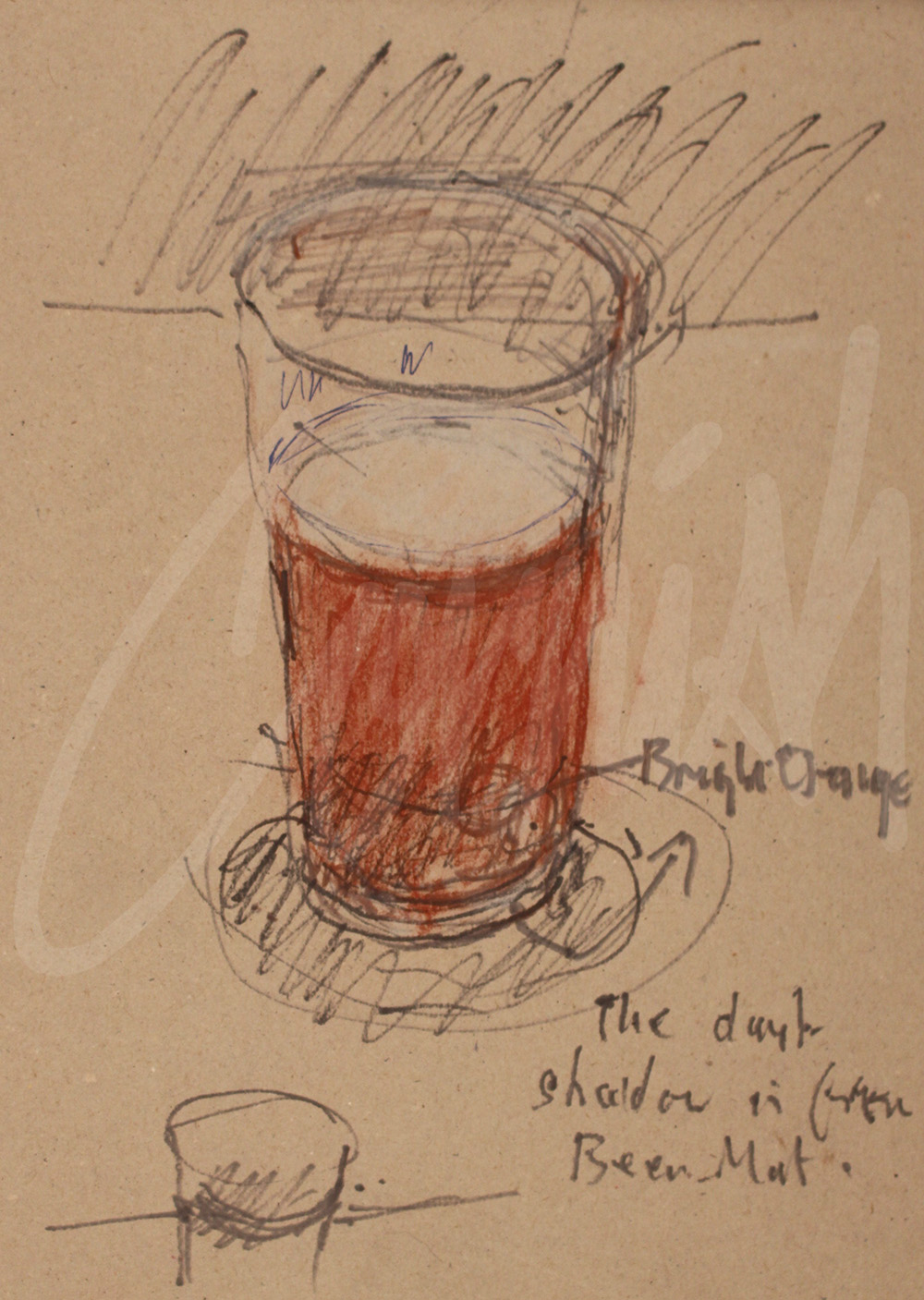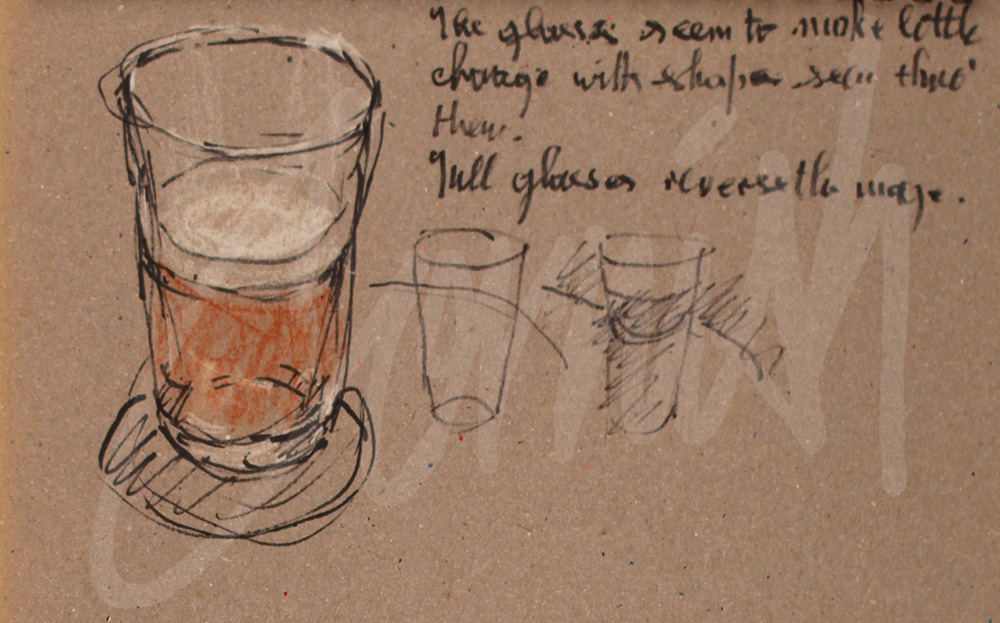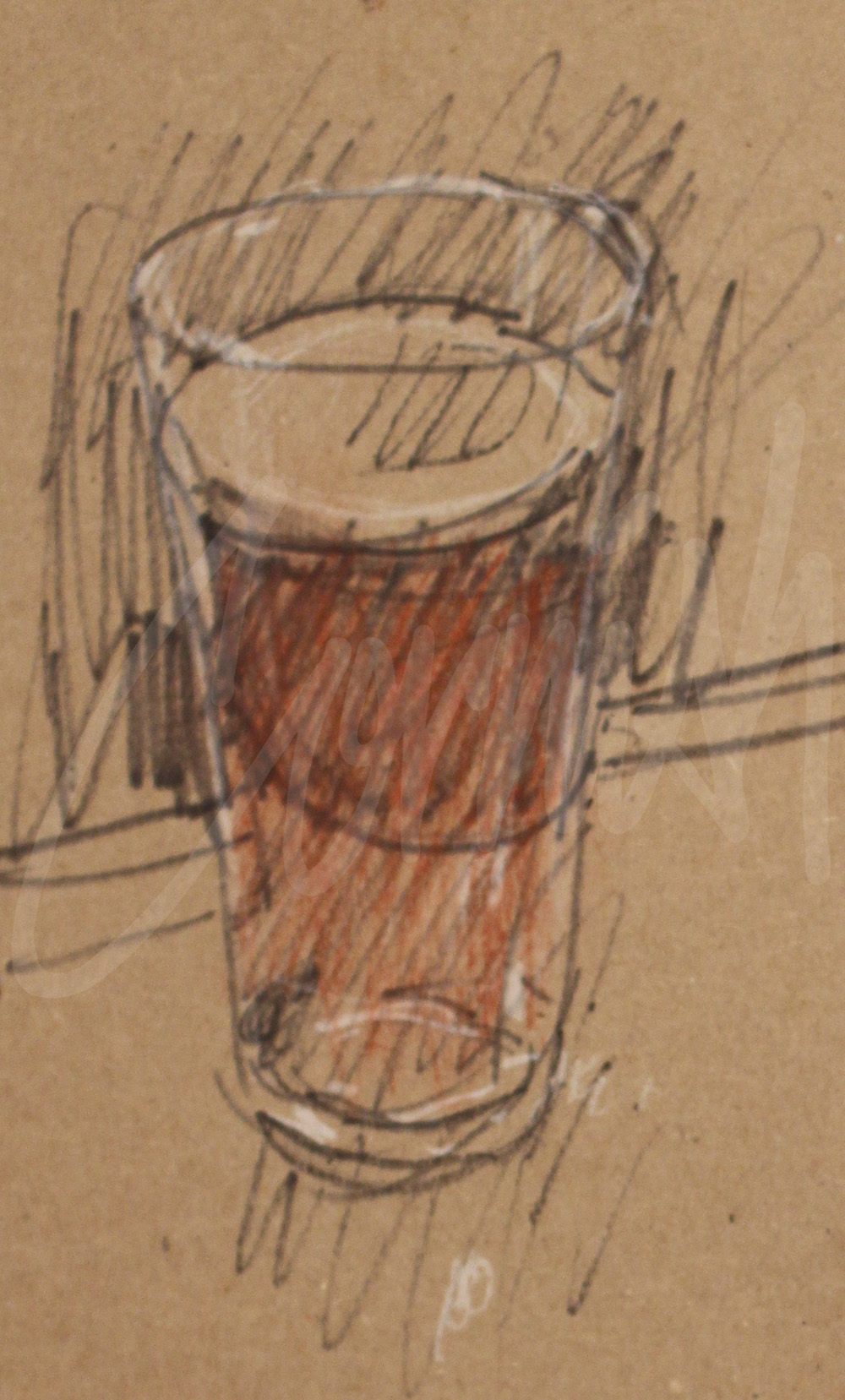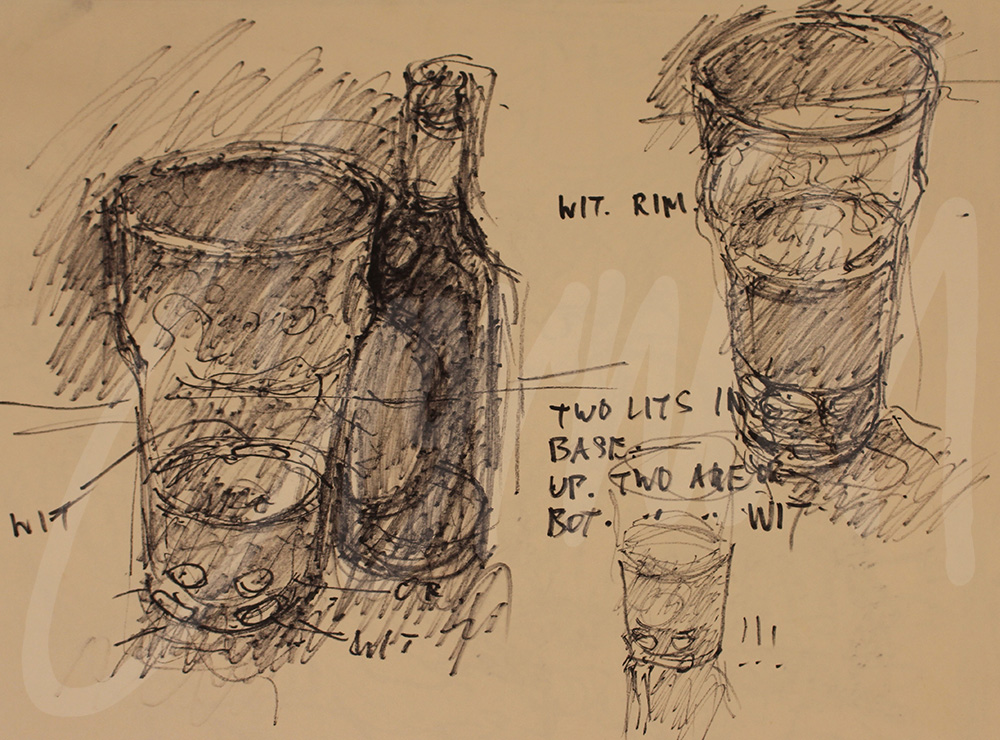
Latest News

The Perfect Pint:
Cornish was advised at an early age to ‘draw and paint the things he knew around him.’ One of the surprising discoveries in Cornish’s 269 sketchbooks were his drawings of a ‘pint of beer.’
There are numerous examples in his sketchbooks and each includes references to colour notes, light, shade and other observational notes. The examples of beer glasses in bar scenes, with the contents at various stages of consumption or empty behind the bar are actually technical studies in their own right for a specific purpose.
Sometimes they appeared in the large bar scenes, but also with small groups of men or individuals, deep in thought with a pint.
Mining was physically hard work and the many pubs in towns and villages not only provided places to meet socially but also served a purpose to quench the thirst of the miners who had worked shifts of eight hours underground.
In his own words: “The accent is on atmosphere which contrasts the earthy humanism with the mysterious glitter of the beer and the glasses.”
No pitman’s home was far from a pub and there were 37 pubs in Spennymoor itself and a similar combined number in the surrounding villages.
Art critic Alistair Gilmour observed, “ Norman understands the pleasurable invitation that lies in a freshly pulled pint following a hard and dirty shift down the pit. You wipe away the first moustache of froth with the same hand gesture that wipes away the grime of the day.”
The bar scenes and character drawings in pubs, playing dominoes, darts, and enjoying ‘the craic’ feature as one of the chapters in Behind The Scenes; The Norman Cornish Sketchbooks, with many examples from this popular theme. Available at www.normancornish.com
For the record, Cornish’s favourite was a pint of Newcastle Brown Ale which he continued to enjoy with visitors in his final years.





